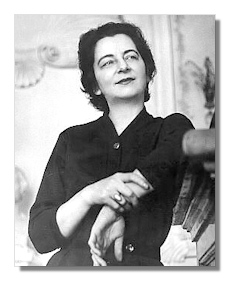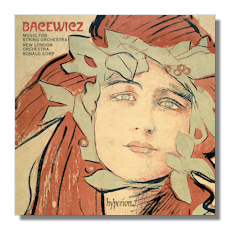
The Internet's Premier Classical Music Source
Related Links
-
Find CDs & Downloads
Amazon - UK - Germany - Canada - France - Japan
ArkivMusic - CD Universe
Find DVDs & Blu-ray
Amazon - UK - Germany - Canada - France - Japan
ArkivMusic-Video Universe
Find Scores & Sheet Music
Sheet Music Plus -
Recommended Links
Site News
Grażyna Bacewicz
(1909 - 1969)

Grażyna Bacewicz (February 5, 1909 - January 17, 1969), was, in addition to a virtuoso violinist and pianist, one of the most significant Polish composers of her time – a group which includes Witold Lutosławski, Henryk-Mikołaj Górecki, Krzysztof Penderecki, and Tadeusz Baird.
Her earliest compositions follow Karol Szymanowski late scores in their sophisticated use of folk elements, but she quickly moved on to a personal brand of neo-classicism. After World War II, like many other Eastern European composers, she briefly came under the influence of Bartók – a good thing, too, since this was the advanced music at least tolerated by the Polish Communist Party. The period includes several masterpieces, among them the Piano Quintet #1 (1952) and the Music for Strings, 5 Trumpets, and Percussion (1958). However, even during this phase, she moved increasingly toward a more avant-garde (that is, within the Polish milieu) and idiosyncratic style made up of several strains, including not only tentative efforts at twelve-tone serialism, but a more sectional language very near where Lutosławski (later) arrived. These works strike me as true experiments: a certain lack of finish clings to them. In her late works, she begins to re-admit folk elements.
She died of cancer, really, in the middle of things, before she could sort out the implications of her new musical direction. In that sense, she died young. ~ Steve Schwartz
Recommended Recordings
Orchestral Music
- Music for Strings, 5 Trumpets & Percussion; Sinfonietta; Concerto for Strings; Symphony/Hyperion CDA67783
-
perf/ens
- Concerto for Strings w/ Britten, Bjorklund, Bartók/2-L Blu-ray & SACD 50
-
perf/ens
- Concerto for Strings w/ Górecki, Shostakovich, Kilar, Szymanowski/Conifer 75605-51246-2
-
Agnieszka Duczmal/Amadeus Chamber Orchestra
- Violin Concertos #1, 3 & 7; Overture/Chandos CHAN10533
-
Joanna Kurkowicz (violin), Łukasz Borowicz/Polish Radio Symphony Orchestra
Chamber Music
- Recommendations to come…
-














